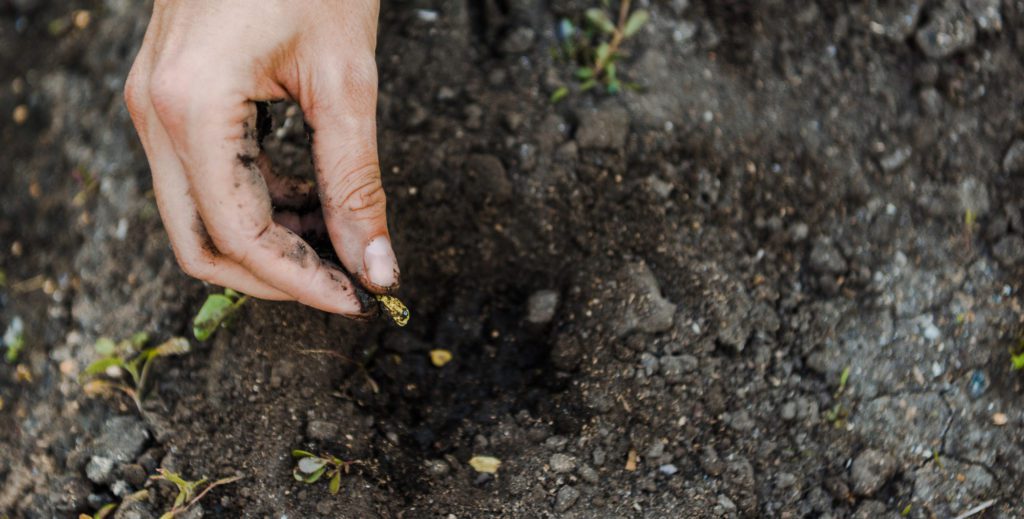I think there are two types of writers, the architects, and the gardeners. The architects plan everything ahead of time, like an architect building a house…. They have the whole thing designed and blueprinted out before they even nail the first board up. The gardeners dig a hole, drop in a seed and water it. They kind of know what seed it is…. But as the plant comes up and they water it, they don’t know how many branches it’s going to have, they find out as it grows….” ~ George R.R. Martin
In an expansive, lodge-like auditorium nestled among towering, ancient redwoods on the 1440 Multiversity campus in Scotts Valley, CA, a line formed at the microphone. Internationally-renowned authors, Liz Gilbert and Cheryl Strayed, sat on the stage ready to field questions from writers and creative entrepreneurs.
Hundreds of us sat, journals open on laps, with our pens poised and ready to take down each and every morsel of advice the writing giants had to offer.
Predictably, the first question posed to the icons pertained to how they work—specifically what their process was when tackling an ambitious, creative project like writing a book.
A young woman asked, “I’m curious what your thought process is … how you get started, and then how do you keep your momentum? Do you begin with a detailed outline and certainty around where the project is going, or do you start without a plan?”
Liz Gilbert answered first. She noted her process is always well thought out in advance. She begins with copious research and note taking on her subject. She knows exactly where the book is going at the onset of the project, and by the time the research and note phase is complete, she sits down and writes.

It sounded as if her books just write themselves.
She argued for such a process as hers, suggesting that one wouldn’t tackle the painting of a room without a plan, for example, as you could end up with a disaster.
I immediately judged my own creative process very harshly. It didn’t remotely resemble Liz’s in the least.
Cheryl Strayed sat forward in her chair, smiled, and leaned toward her mic.
“Well, my process is a bit different. I’m the person who tackles the painting of a room without a plan. I just start painting, and most of the time, I paint myself into a corner.”
The room exhaled and laughed in relief.
George R. R. Martin would call Liz an architect and Cheryl a gardener.
Liz builds a solid structure from the ground up, knowing in detail the bones comprising the final project. Cheryl plants idea seedlings, stands back and observes how (and if) they grow, and takes direction for her garden from the organic impulses held within the casings of each kernel.
Two very accomplished writers with two very different creative processes. Neither is better than the other. Each simply reflects the unique personalities and styles of each creative powerhouse.
In many ways, we live in an architect-favored culture, telling us to have our ducks in a row, with our detailed plans and vision well in place before we start. This approach works incredibly well for some of us, but alienates and discourages those with a more spontaneous, follow-the-work-as-it-goes style.

Regardless of the project we are launching, it is important for us to know which approach suits our inherent style. Once we know if we are more of an architect or a gardener, we can champion our comfort with (and confidence in) our creativity.
Delving into any creative project tests us, rattles us. It is tempting to look around and seek direction from others as to which way of working is the “right” way.
If a gardener believes the creative lore, she may wait and wait to have a perfected plan in place before she starts. As a result, she might never write that book, paint that painting, take that culinary class, or launch that business!
I think we hunger to hear of other creative’s processes and rituals because we haven’t fully explored our own, nor perhaps have we embraced our personal style. We may even think that there is something inherently wrong with how we work and create.
OR, maybe if we are really honest with ourselves, we actually haven’t done enough work to truly know what our rhythms and routines are.
Regardless, we’d all do well to heed the call to action from Scottish mountaineer and writer, William Hutchison Murray: “Whatever you can do or dream you can, begin it. Boldness has genius, power and magic in it. Begin it now.”
Beginning may look like gathering neat piles of scaffolding onto note cards, or may it look like getting going with only a whisper of an idea and winging it.
Whichever approach you choose to embrace, have the assurance it is right (as it yours).
You might have to swat away the dark dog sitting on the edge of your desk, snarling and growling that you have no business whatsoever tackling this project, this dream.
Take your seat anyway.
Your words, paint strokes, ingredients, or business strategies will come. Your ideas will drop into you and form, leading you like stepping stones in a garden. Your vision and message will come to rise in us, taking us to heights and lines of sight we never dreamed we could reach, breaking the bonds of our earthly concerns.










